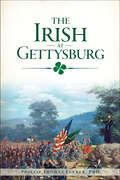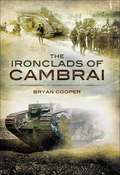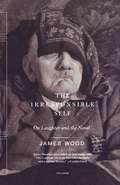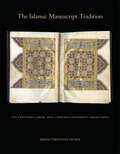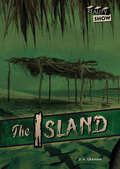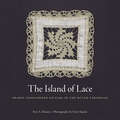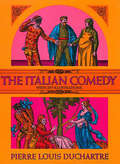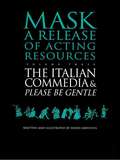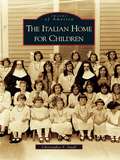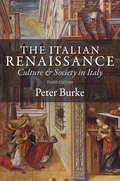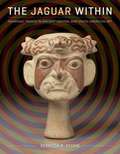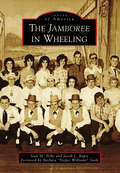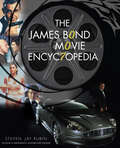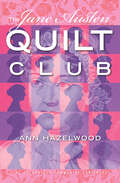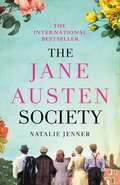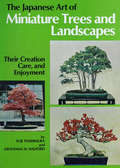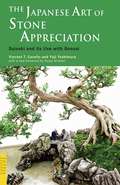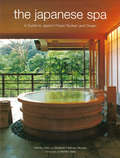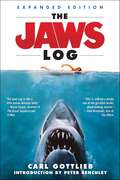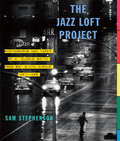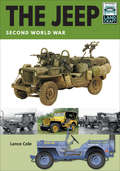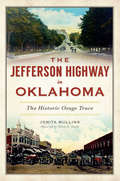- Table View
- List View
The Irish of Gettysburg (Civil War Ser.)
by Philip Thomas TuckerAt the outbreak of the Civil War, Irish citizens on both sides of the Mason-Dixon answered the call to arms. This was most evident at the Battle of Gettysburg.Louisiana Irish Rebels charged with the cry "We are the Louisiana Tigers!" Irish soldiers of the Alabama Brigade and the Texas Brigade launched assaults on the line's southern end at Little Round Top. During Pickett's Charge, Gaelic brothers fought each other as determined Irishmen of the Sixty-Ninth Pennsylvania Volunteer Infantry repelled Irish of the Virginia Brigade in one of the most decisive moments in American history. Author Phillip Thomas Tucker reveals the compelling story.
The Ironclads of Cambrai: The First Great Tank Battle (Cassell Military Paperbacks Ser.)
by Bryan CooperWhen tanks, the newly invented British weapon, were used for the first time in a mass attack on November 20 1917, they not only achieved one of the most remarkable successes of the First World War but set the pattern for the future of mechanized warfare. For the first time in three years of bloody trench warfare, epitomized by the slaughter at Passchendaele which was then reaching its climax, tanks brought about a breakthrough of the massive German defense system of the Hindenburg Line, followed up by British infantry and cavalry divisions. They were supported for the first time by low flying fighter aircraft of the Royal Flying Corps. The initial victory at Cambrai brought cheering crowds into the streets of London and the ringing of church bells in celebration. In seemed possible that the success might bring about the final defeat of Germany. But the British High Command failed to exploit the success. Generals who still dreamt of massive cavalry charges had not had much faith in this strange new weapon that had been brought to them funded initially by the Royal Navy at the behest of Winston Churchill who was then First Lord of the Admiralty and did see its value. The High Command did not really believe the breakthrough was possible and tragically miscalculated the necessary steps to follow it up. Within days the Germans counterattacked and regained much of the ground that the British had won. What could have been the final victory was delayed for another year.
The Irresponsible Self: On Laughter and the Novel
by James Wood"James Wood has been called our best young critic. This is not true. He is our best critic; he thinks with a sublime ferocity." - Cynthia Ozick. Following the collection The Broken Estate-- which established James Wood as the leading critic of his generation-- The Irresponsible Self confirms Wood's preeminence, not only as a discerning judge but also as an appreciator of contemporary novels.
The Islamic Manuscript Tradition: Ten Centuries of Book Arts in Indiana University Collections
by Christiane GruberOver the course of ten centuries, Islam developed a rich written heritage that is visible in paintings, calligraphies, and manuscripts. The Islamic Manuscript Tradition explores this aspect of Islamic history with studies of the materials and tools of literate culture, including pens, inks, and papers, Qur'ans, Persian and Mughal illustrated manuscripts, Ottoman devotional works, cartographical manuscripts, printed books, and Islamic erotica. Seven essays present new scholarship on a wide range of topics including collection, miniaturization, illustrated devotional books, the history of the printing press in Islamic lands, and the presence and function of erotic paintings. This beautifully produced volume includes 111 color illustrations and provides a valuable new resource for students and scholars of Islamic art.
The Island (Reality Show)
by D. A. GrahamWhen you love a show, you jump at the chance to be on it, right? That's how Ethan felt when he signed up for a survival reality TV competition. But once he and the other nine contestants are left on an uninhabited island with no technology to help them, he realizes he's in over his head. The contestants must find food and shelter as well as compete in a series of tasks. In a show that's based on ruthless competition, he will somehow have to befriend some other contestants to help him if he wants to make it to the end.
The Island of Lace: Drawn Threadwork on Saba in the Dutch Caribbean
by Eric A. EliasonNicknamed the “Island of Lace,” the Caribbean island of Saba is the smallest special municipality in the Netherlands. Folklorist Eric A. Eliason, at the behest of the president of the Saba Lace Ladies’ Foundation and Saba’s director of tourism, traveled to the island with the intent to document the history and patterns of Saba lace. Born out of his research, The Island of Lace tells the story of lacework’s central role in Saba’s culture, economy, and history. Accompanied by over three hundred of Scott Squire’s intimate photographs of lace workers and their extraordinary island society, this volume brings together in one place an as-complete-as-possible catalog of the rich designs worked by Saban women. For 130 years, the practice of drawn threadwork—also known as Spanish work, fancy work, lacework, or Saba lace—has shaped the lives of Saban women. And yet, as the younger generation moves away from the island, it still survives. Sabans use drawn threadwork to symbolize the uniqueness of their island and express the ingenuity, diligence, bold inventiveness, pride in workmanship, love of beauty, and respect for tradition that define the Saban spirit. Along with recording and honoring the creative legacy of generations of Saban women, this book serves as a guide to folk-art lace patterns from Saba so that practitioners can reference and perhaps re-create this work. The Island of Lace is the most comprehensive volume on this singular tradition ever published.
The Italian Comedy
by Pierre Louis DuchartreIllustrated history of the beginnings, growth and influence of the commedia dell' arte. Describes improvisations, staging, marks, scenarios, acting troupes, and origins.
The Italian Commedia and Please be Gentle
by David GriffithsFocusing on Commedia Dell'Arte, this work provides a historical and critical commentary of the Commedia. It highlights common factors between this genre and that of the Japanese Noh theatre. The author proposes six similarities: characters familiar to their audience and masked, minimal properties and scenery with the focus on the actor, the "families" of performers, a sharp mind as well as an agile body, a professional living on these skills and patronage, and a knowledgeable audience. Complementing this book is the play "Please Be Gentle" which explores the various tricks and devices of Commedia Dell'Arte acting.
The Italian Home for Children
by Christopher F. SmallAs it ravaged the world, the influenza epidemic of 1918 devastated Boston's congested North End and left hundreds of orphans in its wake. Touched by this crisis, a Roman Catholic priest and a group of Italian Americans founded the first home for Italian children in Massachusetts. Franciscan Sisters devoted 24 hours a day to providing the children with a safe, loving, and spiritual environment. In addition, the home provided educational support for its residents. Over time, the changing needs of children mandated that the agency change the nature of its services from custodial care to treatment. In 1974, in response to the changing political and social climate, the agency became the Italian Home for Children. Today, it is a nonprofit, nonsectarian residential treatment facility with a capacity for 61 children of all races, nationalities, and religions. The images in The Italian Home for Children document milestones in the organization's history: the devastating influenza epidemic, the Missionary Franciscan Sisters of the Immaculate Conception, Christmas plays, a visit from Joe DiMaggio, trips to Canobie Lake Park in the summer, the Tony Martin benefit performance at Boston Garden, and the home as it is today--a refuge for children in the most severe crises.
The Italian Painters of the Renaissance
by Bernard BerensonImmerse yourself in the captivating world of Renaissance art with Bernard Berenson's authoritative and insightful book, "The Italian Painters of the Renaissance." Renowned as one of the foremost art historians of the 20th century, Berenson offers a profound and comprehensive analysis of the artists and masterpieces that defined this golden age of creativity and innovation.In "The Italian Painters of the Renaissance," Berenson meticulously examines the works of key figures such as Leonardo da Vinci, Michelangelo, Raphael, Titian, and Botticelli, among others. Through his erudite and engaging narrative, he explores the distinct styles, techniques, and contributions of these artists, shedding light on how they collectively transformed the art world and laid the foundation for modern Western art.Berenson delves into the historical and cultural context of the Renaissance, providing readers with a deeper understanding of the social, political, and philosophical currents that influenced these painters. He eloquently discusses the interplay between art and humanism, the revival of classical antiquity, and the burgeoning spirit of scientific inquiry that characterized the period."The Italian Painters of the Renaissance" is not just a study of art history; it is a celebration of the unparalleled genius and enduring legacy of Renaissance artists. Bernard Berenson's passion for the subject and his scholarly rigor shine through every page, offering readers a timeless exploration of one of the most dynamic and influential periods in art history.Whether you are an avid art lover or new to the subject, this book provides a comprehensive and inspiring overview of the Italian Renaissance, inviting you to appreciate the beauty and significance of its artistic achievements. Bernard Berenson's work remains a cornerstone in the study of Renaissance art, ensuring that the brilliance of this era continues to captivate and educate future generations.
The Italian Renaissance: Culture and Society in Italy, Third Edition
by Peter BurkePeter Burke presents a social and cultural history of the Italian Renaissance. He discusses the social and political institutions that existed in Italy during the fifteenth and sixteenth centuries, and he analyses the ways of thinking and seeing that characterized this period of extraordinary artistic creativity.
The Italian Table (Food & Wine)
by The Editors of Food & WineThe editors of Food & Wine Magazine present Food & Wine The Italian Table.
The Italic People of Ancient Apulia
by T. H. Carpenter K. M. Lynch E. G. D. Robinson T. H. Carpenter K. M. LynchThe focus of this book is on the Italic people of Apulia during the fourth century BC, when Italic culture seems to have reached its peak of affluence. Scholars have largely ignored these people and the region they inhabited. During the past several decades archaeologists have made significant progress in revealing the cultures of Apulia through excavations of habitation sites and un-plundered tombs, often published in Italian journals. This book makes the broad range of recent scholarship - from new excavations and contexts to archaeometric testing of production hypotheses to archaeological evidence for reconsidering painter attributions - available to English-speaking audiences. In it thirteen scholars from Italy, the United States, Great Britain, France, and Australia present targeted essays on aspects of the cultures of the Italic people of Apulia during the fourth century BC and the surrounding decades.
The Jaguar Within
by Rebecca R. StoneShamanism-the practice of entering a trance state to experience visions of a reality beyond the ordinary and to gain esoteric knowledge-has been an important part of life for indigenous societies throughout the Americas from prehistoric times until the present. Much has been written about shamanism in both scholarly and popular literature, but few authors have linked it to another significant visual realm-art. In this pioneering study, Rebecca R. Stone considers how deep familiarity with, and profound respect for, the extra-ordinary visionary experiences of shamanism profoundly affected the artistic output of indigenous cultures in Central and South America before the European invasions of the sixteenth century. Using ethnographic accounts of shamanic trance experiences, Stone defines a core set of trance vision characteristics, including enhanced senses, ego dissolution, bodily distortions, flying, spinning and undulating sensations, synaesthesia, and physical transformation from the human self into animal and other states of being. Stone then traces these visionary characteristics in ancient artworks from Costa Rica and Peru. She makes a convincing case that these works, especially those of the Moche, depict shamans in a trance state or else convey the perceptual experience of visions by creating deliberately chaotic and distorted conglomerations of partial, inverted, and incoherent images.
The Jamboree in Wheeling (Images of America)
by Ivan M. Tribe Jacob L. BapstBeginning in the mid-1920s, radio stations that catered to rural audiences sponsored programs featuring country music, generically termed "barn dances." Ranking second in terms of longevity and perhaps in significance to the Grand Ole Opry from WSM Nashville came the Jamboree in Wheeling, West Virginia. It became the springboard for such country stars as Wilma Lee and Stoney Cooper, Hawkshaw Hawkins, the Osborne Brothers, Doc and Chickie Williams, Lee Moore, Big Slim the Lone Cowboy, and most recently, Brad Paisley. Under slightly varying names, the Jamboree flourished from 1933 through 2005 over the airwaves of 50,000-watt WWVA 1170 AM and now airs on WWOV 101.1 FM.
The James Bond Movie Encyclopedia
by Steven Jay RubinIan Fleming's James Bond character has entertained motion picture audiences for nearly sixty years, and the filmmakers have come a long way since they spent $1 million producing the very first James Bond movie, Dr. No, in 1962. The 2015 Bond title, Spectre, cost $250 million and grossed $881 million worldwide—and 2020's No Time to Die is certain to become another global blockbuster. The James Bond Movie Encyclopediais the completely up-to-date edition of author Steven Jay Rubin's seminal work on the James Bond film series. It covers the entire series through No Time to Die. Packed with behind-the-scenes information based on interviews with the cast and filmmakers, fascinating facts, trivia, bloopers, classic quotes, character bios, and cast and filmmaker bios, it showcases the type of exhaustive research that has been a hallmark of Rubin's work in film history. It also features hundreds of rare and unusual still photographs of the participants both in front of and behind the camera.
The Jane Austen Quilt Club (Colebridge Community Series)
by Ann HazelwoodEveryone has at least one secret they carry through their lives. Lily tries to keep a secret herself as she encounters the many secrets of her quilt class, community, friends, and family members. The mystery continues with the doctor that once lived in Lily's house, whose secrets may never be known. An unexpected, life-changing secret is revealed when an estranged cousin comes to visit. Will Lily tell? Quilted Secrets is the third novel in the Wine Country Quilts Series. Ann Hazelwood is a former shop owner and native of St. Charles, Missouri. She's always adored quilting and is a certified quilt appraiser. She's the author of the wildly successful Colebridge Community Series and considers writing to be one of her greatest passions. Other Book Series: Colebridge Community Series (7 novels) and East Perry County Series (5 novels).
The Jane Austen Society: The internationally bestselling debut that has won readers' hearts in 2021
by Natalie JennerTHE INTERNATIONAL BESTSELLER'A wonderful book, a wonderful read' Karen Joy Fowler, bestselling author of The Jane Austen Book ClubOnly a few months after the end of the Second World War, a new battle is beginning in the little village of Chawton. Once the final home of Jane Austen, the Chawton estate is dwindling, and the last piece of Austen's heritage is at risk of being sold to the highest bidder... Drawn together by their love of her novels, eight very different people - from a local farmer to a glamorous film star - must unite to attempt something remarkable. As new friendships form, and the griefs of the past begin to fade, they rally together to create the Jane Austen Society, and to save the beloved novelist's home and legacy. But can her words change all their lives in return?A heartbreaking and uplifting novel of hope, loss and love. Perfect for fans of Miss Austen by Gill Hornby and The Guernsey Literary and Potato Peel Pie Society by Annie Barrows and Mary Ann Shaffer'A charming and memorable debut, which reminds us of the power of books to unite and heal'Pam Jenoff, New York Times bestselling author of The Lost Girls of Paris
The Japanese Art of Minature Trees and Landscapes
by Giovanna M. Halford Yuji YoshimuraNOW AT LAST an eminently practical book about one of Japan's most fascinating arts. Japanese miniature landscapes and, particularly, dwarf trees-"bonsai," as they are frequently called even in the West-have long been admired throughout the world, and large sums have been spent importing them into other countries, often only to have them die. There is something so magical, unearthly even, about their gemlike beauty that their creation has generally been thought an occult science, and for the layman even their care and preservation have seemed to be shrouded in mystery. As this book proves, however, the creation and care of bonsai is a comparatively simple art which can actually be systematically taught rather than, as in earlier books on the subject, just talked about vaguely. Now, given a reasonably green thumb and a modicum of patience, anyonein any country can create his own bonsai; and still easier is it to apply the few matter-of-fact rules necessary to keep a finished bonsai in healthy and vigorous condition for generations. Here are detailed instructions, together with many helpful diagrams and charts and a treasury of photographs, on every phase of the art: propagation and training, with hints for those in a hurry and for small-apartment dwellers; daily and seasonal care, and treatment of pests; how to judge, select, and exhibit bonsai, with emphasis always upon the untold enjoyment they can provide. Included also, for those who want still more detailed information, are invaluable appendices concerning tools and equipment, soil analyses, and precise data on the more than three hundred species of plants used in making bonsai. This, then, is a definitive work, one which has long beenneeded and which will remain the bonsai book for years to come. It is a book for those who want to try their hand at a fascinating hobby; for those who, preferring to buy their bonsai ready-made, want to fulfill their responsibility of preserving such miniature loveliness; and for those who want simply to understand more about one of Japan's most treasured traditions, "sculpturing beauty in living wood."
The Japanese Art of Stone Appreciation: Suiseki and its Use with Bonsai (Tuttle Classics)
by Yuji Yoshimura Sonja Arntzen Vincent T. CovelloThe Japanese Art of Stone Appreciation is an exploration into the art of suiseki--small, naturally formed stones selected for their shape, balance, simplicity and tranquility.<P><P>Written by two leading experts in the field of Japanese gardening and art, this concise introduction offers aesthetic guidance and direct practical advice that is a window into traditional Japanese culture. It details the essential characteristics of a high-quality suiseki, describing the various systems of stone classification in this Japanese art form and explaining how to display a suiseki to its best advantage. There is also a section on incorporating suiseki alongside a bonsai tree, the most popular and rewarding complement to peaceful suiseki miniature landscape gardens.Sections include:Historical BackgroundCharacteristics and Aesthetic QualitiesClassification of SuisekiDisplaying a StoneSuiseki with Bonsai and Other Related ArtsCollecting SuisekiHow to Make a Carved Wooden BaseSuiseki Classification Systems
The Japanese Spa
by Akihiko Seki Elizabeth Heilman BrookeThe lavish photos of inns and hot springs collected in this book will provide homeowners with a wealth of inspiration.With more than 250 color photographs, this is essential for anyone interested in luxury Japan. Each chapter discusses an extravagant inn, its local history, and its cultural traditions. Each of the properties has been handpicked by the author for their strong design aesthetic. The lodgings pictured here will bring a flush of new ideas to home decorators across the world.The Japanese Spa shows the way to places of fragile beauty and luxurious peace.
The Jaws Log: 30th Anniversary Edition (Shooting Script Ser.)
by Carl GottliebWinner of three Oscars and the highest-grossing film of its time, Jaws was a phenomenon, and this is the only book on how twenty-six-year-old Steven Spielberg transformed Peter Benchley's number-one bestselling novel into the classic film it became.Hired by Spielberg as a screenwriter to work with him on the set while the movie was being made, Carl Gottlieb, an actor and writer, was there throughout the production that starred Roy Scheider, Robert Shaw, and Richard Dreyfuss. After filming was over, with Spielberg's cooperation, Gottlieb chronicled the extraordinary yearlong adventure in The Jaws Log, which was first published in 1975 and has sold more than two million copies. This expanded edition includes a photo section, an introduction by Benchley, and an afterword by Gottlieb that gives updates about the people and events involved in the film, ultimately providing a singular portrait of a famous movie and inspired moviemaking.
The Jazz Loft Project
by Sam StephensonIn 1957, Eugene Smith, a thirty-eight-year-old magazine photographer, walked out of his comfortable settled world--his longtime well-paying job at Life and the home he shared with his wife and four children in Croton-on-Hudson, New York--to move into a dilapidated, five-story loft building at 821 Sixth Avenue (between Twenty-eighth and Twenty-ninth streets) in New York City's wholesale flower district. Smith was trying to complete the most ambitious project of his life, a massive photo-essay on the city of Pittsburgh.821 Sixth Avenue was a late-night haunt of musicians, including some of the biggest names in jazz--Charles Mingus, Zoot Sims, Bill Evans, and Thelonious Monk among them--and countless fascinating, underground characters. As his ambitions broke down for his quixotic Pittsburgh opus, Smith found solace in the chaotic, somnambulistic world of the loft and its artists. He turned his documentary impulses away from Pittsburgh and toward his offbeat new surroundings.From 1957 to 1965, Smith exposed 1,447 rolls of film at his loft, making roughly 40,000 pictures, the largest body of work in his career, photographing the nocturnal jazz scene as well as life on the streets of the flower district, as seen from his fourth-floor window. He wired the building like a surreptitious recording studio and made 1,740 reels (4,000 hours) of stereo and mono audiotapes, capturing more than 300 musicians, among them Roy Haynes, Sonny Rollins, Bill Evans, Roland Kirk, Alice Coltrane, Don Cherry, and Paul Bley. He recorded, as well, legends such as pianists Eddie Costa, and Sonny Clark, drummers Ronnie Free and Edgar Bateman, saxophonist Lin Halliday, bassist Henry Grimes, and multi-instrumentalist Eddie Listengart.Also dropping in on the nighttime scene were the likes of Doris Duke, Norman Mailer, Diane Arbus, Robert Frank, Henri Cartier-Bresson, and Salvador Dalí, as well as pimps, prostitutes, drug addicts, thieves, photography students, local cops, building inspectors, marijuana dealers, and others.Sam Stephenson discovered Smith's jazz loft photographs and tapes eleven years ago and has spent the last seven years cataloging, archiving, selecting, and editing Smith's materials for this book, as well as writing its introduction and the text interwoven throughout.W. Eugene Smith's Jazz Loft Project has been legendary in the worlds of art, photography, and music for more than forty years, but until the publication of The Jazz Loft Project, no one had seen Smith's extraordinary photographs or read any of the firsthand accounts of those who were there and lived to tell the tale(s) . . .
The Jeep: Second World War (LandCraft)
by Lance Cole&“The Jeep is as iconic a military vehicle as the Chieftain tank, and this terrific book celebrates it in brilliant style . . . inspiring.&” —Books Monthly The Second World War Jeep was one of the most famous and influential military vehicles of all time, and over 600,000 were produced. It served with all the Allied forces during the war on every front and it has been the inspiration behind the design of light, versatile, rugged military and civilian vehicles ever since. In this, the first volume in Pen & Sword&’s LandCraft series, Lance Cole traces the design, development and manufacturing history of the Jeep and describes its operational role within the Allied armies. A selection of archive photographs showing the Jeep in service in European and Pacific campaigns gives a graphic impression of how adaptable the Jeep was and records the variety of equipment it could carry. The book is an excellent source for the modeler, providing details of available kits, together with specially commissioned color profiles recording how the Jeeps used by different units and armies appeared. Lance Cole&’s introduction to the Jeep is necessary reading and reference for enthusiasts and modelers. &“If you are a modeler looking for guidance and inspiration then this book is a must have. Its pages are packed full of jeep goodness, giving tips and ideas for your build. It is also a great read, or coffee-time browser, if you are a vehicle enthusiast or simply love Willys/Ford jeeps and merely want to stimulate your brain and satisfy your eyes.&” —The OCAD Collection
The Jefferson Highway in Oklahoma: The Historic Osage Trace (American Heritage)
by Glenn E. Smith Jonita MullinsOklahoma's central location makes it a natural crossroads, and the trails of yesterday became the superhighways of today. Perhaps the best example is Route 69, also known as the Jefferson Highway. The paved highway was begun in 1915, but its course was heavily traveled for centuries before that. Engineers could map no better path than the generations who cut it through the wilderness out of necessity. Author Jonita Mullins leads a journey along this ancient way that recalls some of Oklahoma's most important history and celebrates some of its most fascinating characters.
